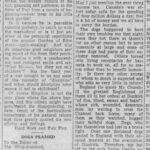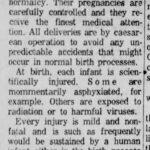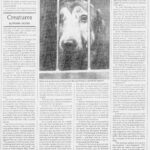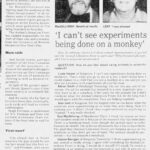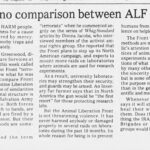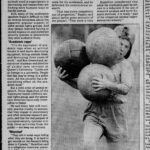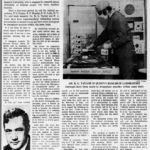Street Address: Botterell Hall, 18 Stuart Street
Like most universities, Queen’s University has a long tradition of doing experiments on animals. The university has conducted animal experiments in a variety of locations including “The Animal House” (formerly on the North Side of the New Medical Laboratory), the Biosciences building (on Arch Street), and here in Botterell Hall. The animals most used for research in universities are rodents and fishes; other animals include dogs, cats, and monkeys. In 2020, Queen’s reported that 14,530 animals were involved in 97 research and teaching protocols at the university.[1]
Research and testing using animals has long been a contentious issue at the university with several cycles of activism identifying the practice as cruel, unfair and out of step with public values, and the university calling activists terrorists and enemies of science. In the 1980s, for example, Dr. Ronald Greenwood (the chairman and director of animal care services at Queen’s University) called animal rights activists everything from “disruptive” to “terrorists”[2] going as far as to say that they were carrying out “academic rape”[3] when they prevented experiments from being conducted. While scientists said, “everybody benefits” from the research being conducted, Kingstonians at the time had mixed reactions with many thinking that the work was “wrong.”[4] More recently, in 2016, when faculty and student members of Queen’s Animal Defence undertook educational campaigns and a Freedom of Information request to penetrate the veil of secrecy concerning research activities at Queen’s, they were labelled as abettors of terrorism.[5]
One of the most contentious animals that experiments are carried out on are monkeys. As of 2022, rhesus macaques (among other nonhuman primates) at Queen’s continued to spend their entire lives in cages in windowless rooms, two floors underground at Botterell Hall, used in a variety of neurological studies involving invasive procedures and tedious, repetitive tasks.[6] In 2005 the University decided to “terminate” a monkey, Newton, who had developed a glaucoma at the age of four making him unsuitable for eye-tracking tasks.[7] A lab tech spoke up for Newton and arranged for The Fauna Foundation (a sanctuary for animals used in biomedical research) to take him instead. Fauna did so on the condition they could take other monkeys who the researchers were planning to kill. But the university relinquished only one more monkey, Darla, who had been used in a 15 year long menstrual study (which involved a hysterectomy) and later an anorexia study (where she was deprived of food).[8] Darla and Newton are the only two monkeys, out of many hundreds, known to have left Queen’s alive.[9]
In 2015, Queen’s University turned down an opportunity to host the Canadian Centre for Alternatives to Animal Methods (CCAAM). This despite it being increasingly accepted that much animal testing and research is not only morally problematic but ineffective, economically costly, and scientifically dubious.[10] Roughly 95% of biomedical trials for drugs developed using animals fail in human trials; and of the 5% which make it to the market, 50% are withdrawn or receive black box warnings.[11] Dr. Charu Chandrasekera (who runs the CCAAM at the University of Windsor) believes it is for these reasons that there is an increasing shift away from using animals.[12]
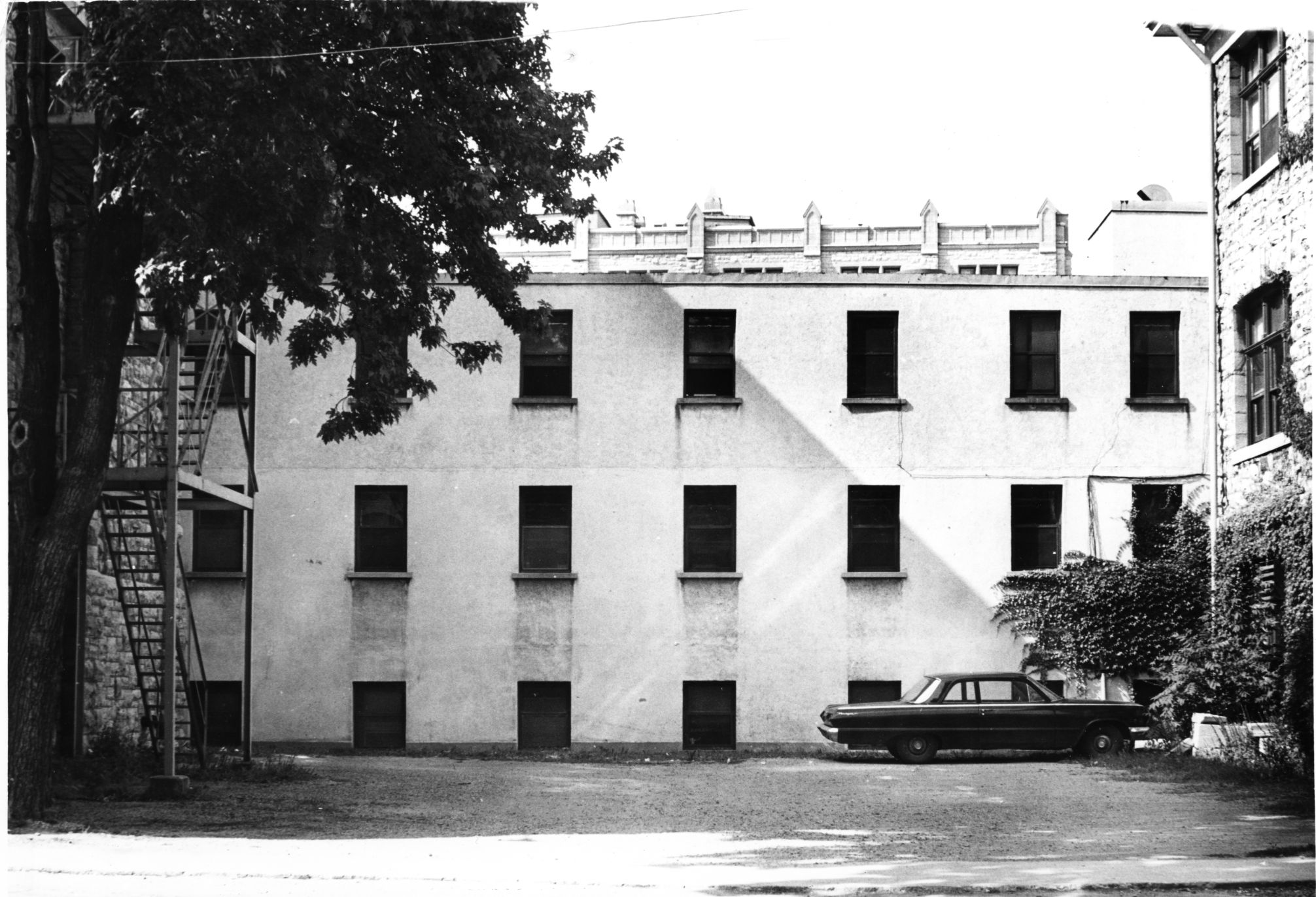
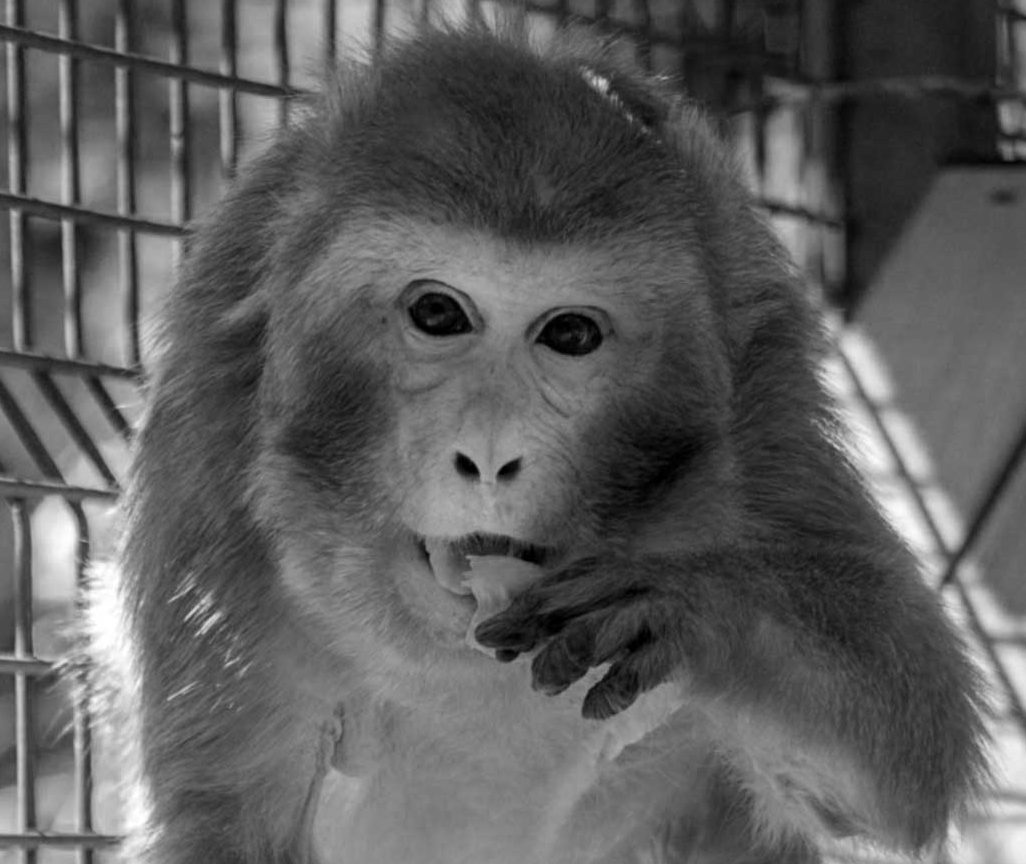
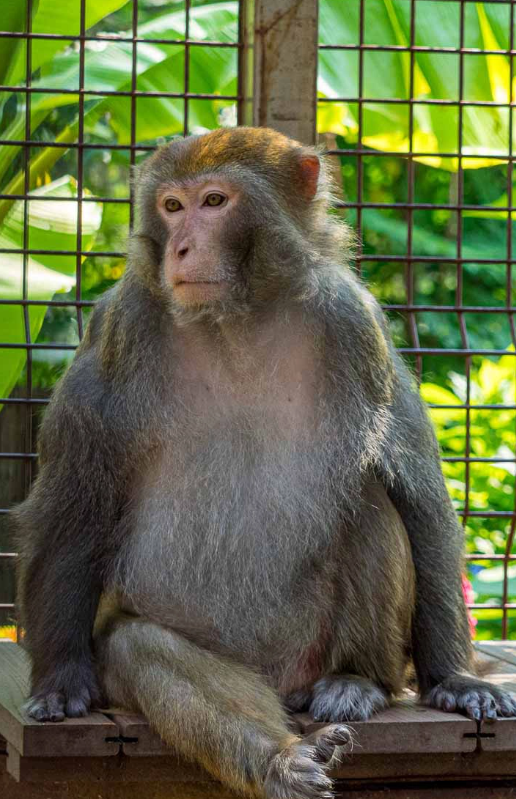
Notes and Credits:
Images:
- 1942-08-26, “Dogs Praised,” The Kingston Whig Standard, Page 4.
- 1959-03-07, “Use Monkeys in Birth Injury Tests,” The Kingston Whig-Standard, Page 18.
- 1970-10-23, “Orthopedic Research,” The Kingston Whig-Standard, Page 7.
- 1984-02-25, “A haven for pets,” The Kingston Whig-Standard, Page 63.
- 1985-01-21, “Animal Rights Group, ‘terrorists like PLO’”, The Kingston Whig-Standard, Page 1.
- 1985-01-25, “There’s no comparison between ALF and PLO,” The Kingston Whig Standard.
- 1986-07-18, “Animal Rights Activists Distort Truth: Scientists,” The Kingston Whig-Standard, Page 17.
- 2016-11-21, “Am I a Member of the Queen’s Community,” Animal Liberation Currents,
Extras:
- Monkey, book by Desmond Morris
- Voracious Science and Vulnerable Animals: A Primate Scientist’s Ethical Journey, by John P. Gluck
- Animals and Biosecurity, Season 5 of the Animal Turn Podcast
Footnotes:
- [1] Of those animals, 77% are rodents, 7.7% wildlife species, 13.3% laboratory fish, and 1.2% large mammals. Queen’s University, “Reporting on Animals Used in Science at Queen’s: 2020 Summary”
- [2] 25 January 1985, “There’s no comparison between ALF and PLO,” The Kingston Whig Standard. Available from Newspapers.com.
- [3] 18 July 1986, “Animal Rights Activists Distort Truth: Scientists,” The Kingston Whig-Standard, Page 17. Available from Newspapers.com.
- [4] 25 January 1985, “There’s no comparison between ALF and PLO,” The Kingston Whig Standard. Available from Newspapers.com.
- [5] Donaldson, S., 2016. “Queen’s Animal Defence: A Profile in Advocacy” Available from Animal Liberation Currents.
- [6] Take for example the experiments done for the following work: Marino, R.A; Munoz, D.P., and Levy, R., 2022. Role of Rostral Superior Colliculus in Gaze Stabilization during Visual Fixation, Journal of Cognitive Neuroscience, 1-20. Available from PubMed.
- [7] “About Newton”, Available from the Fauna Foundation.
- [8] “Darla” Available from the Fauna Foundation.
- [9] A recent example of a study conducted at Queen’s using rhesus macaques can be found here: https://www.ncbi.nlm.nih.gov/pmc/articles/PMC8691841/#article-1aff-info
- [10] Hartung, T., 2009. Toxicology for the twenty-first century. Nature 460: 208-212. Available from Nature. You can also hear Thomas Hartung discussing some of the alternatives to animal testing on The Animal Turn Podcast (Season 5 Episode 5); Also see the Pros and Cons list created by ProCon.org titled “Should Animals Be Used for Scientific or Commercial Testing?”
- [11] Charu Chandrasekera’s talking to Stafl, H., 2019. “The curtain on animal research at Queen’s lifts an inch”, Available from The Journal. Also see Akhtar, A., 2015. The Flaws and Human Harms of Animal Experimentation. Cambridge Quarterly of Healthcare Ethics 24(4): 407-419.
- [12] Stafl, H., 2019. “The curtain on animal research at Queen’s lifts an inch”, Available from The Journal. Also listen to Charu Chandrasekera’s Ted talk “It’s Time to Think Outside the Cage”.


